
By Leith van Onselen
As Houses & Holes reported earlier, the Australian Bureau of Statistics (ABS) this morning released the labour force data for the month of March and it was very good.
In seasonally adjusted terms, total employment increased 44,000 (0.4%) to 11,491,200. Full-time employment increased 15,800 (0.2%) to 8,080,400 and part-time employment increased 28,200 (0.8%) to 3,410,900.
The below chart shows the changes in these components since April 2008. As you can see, this month’s employment gain of 44,000 persons more than offset the prior month’s job losses (-15,400 persons):
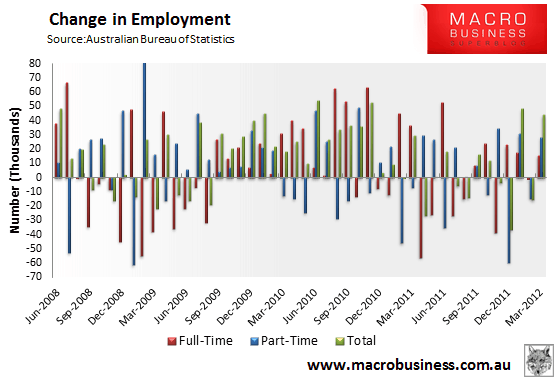
The total level of employment in Australia has now reached an all-time high, surpassing the previous peak reached in January 2011, although the trend in jobs growth is still quite flat:
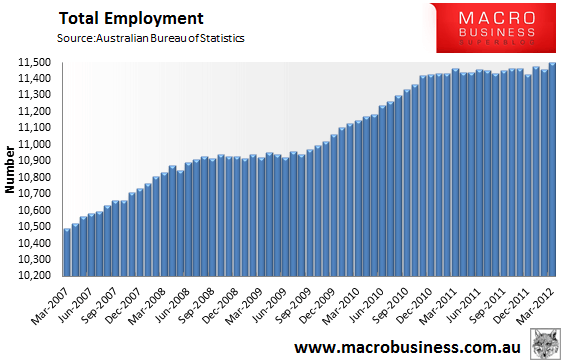
On a rolling annual basis, employment growth was 0.33% in March, which is slightly above the low of -0.01% reached in December 2011:
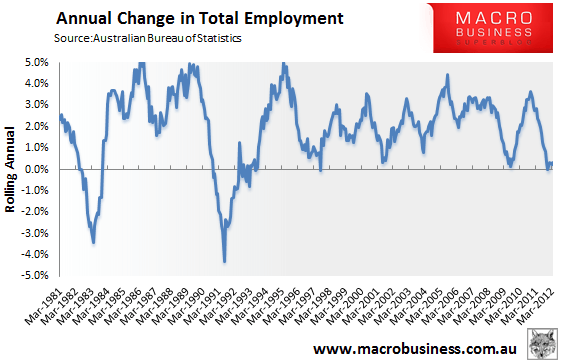
Despite the creation of 44,000 jobs – and increase of 0.4% – the headline unemployment rate remained steady at 5.2%. This is because the labour force participation rate also rose by 0.2%, helping to offset some of the employment gain (see below chart).
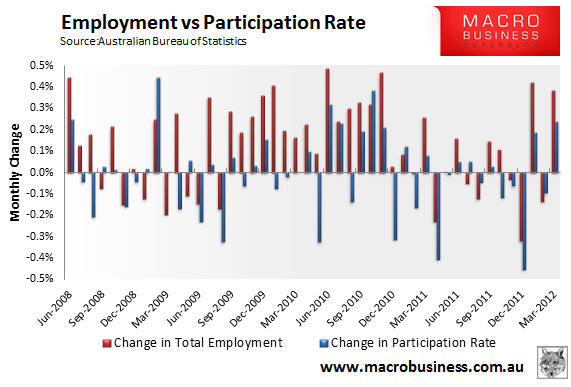
This is a welcome development. The solid increases in the labour force participation rate in January and March have helped to offset a downtrend that had developed since October 2010, presumably due to discouraged job seekers leaving the workforce:
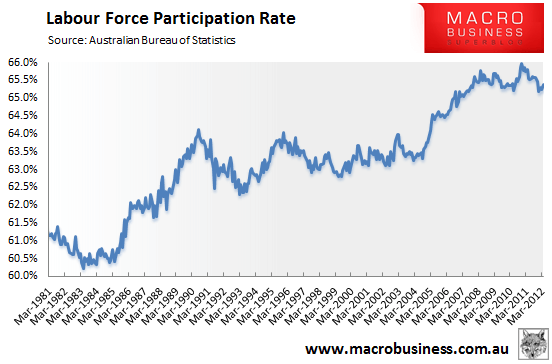
Another positive from the release is that the aggregate number of hours worked rose by 9.5 million hours in March:
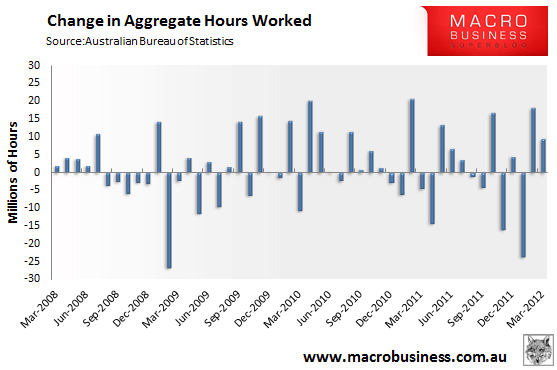
The annual change in aggregate hours worked has also turned positive – up 0.9% in the 12 months to March 2012, although there is a large divergence between the mining and non-mining states:
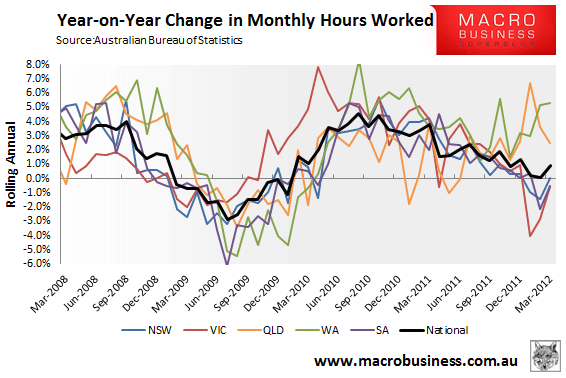
Turning to the state-by-state breakdown, all states except for Tasmania added jobs in March, with New South Wales and Victoria leading the way:
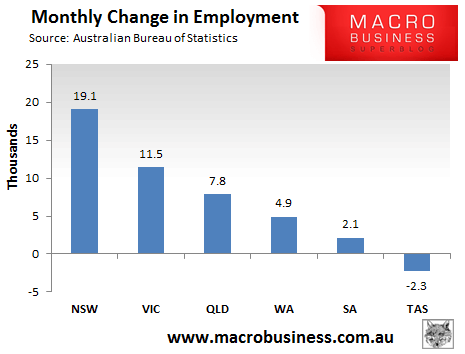
Over the year, however, it’s the mining states that have dominated the job creation stakes, with Victoria is the clear laggard:
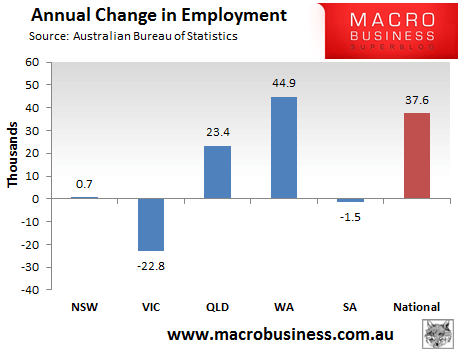
Reflecting its status as Australia’s resources capital, Western Australia has by far the lowest unemployment rate in the nation (4.1%). New South Wales’ unemployment rate fell sharply in March (to 4.8% from 5.1%), whereas Victoria’s rose sharply (to 5.8% from 5.5%). Tasmania has the worst unemployment in the nation at 7.0%:
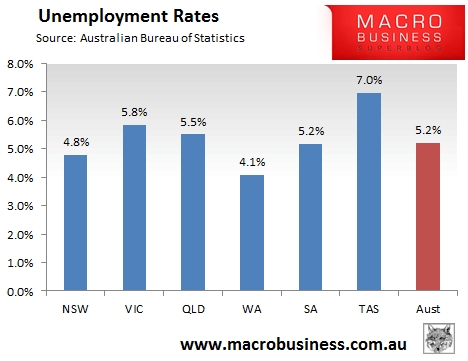
So overall it’s an unequivocally strong result, which must count against the Reserve Bank of Australia’s promised lowering official interest rates at next month’s board meeting. The official ABS result also continues the divergence between it and the unofficial Roy Morgan measure (more on this later).

